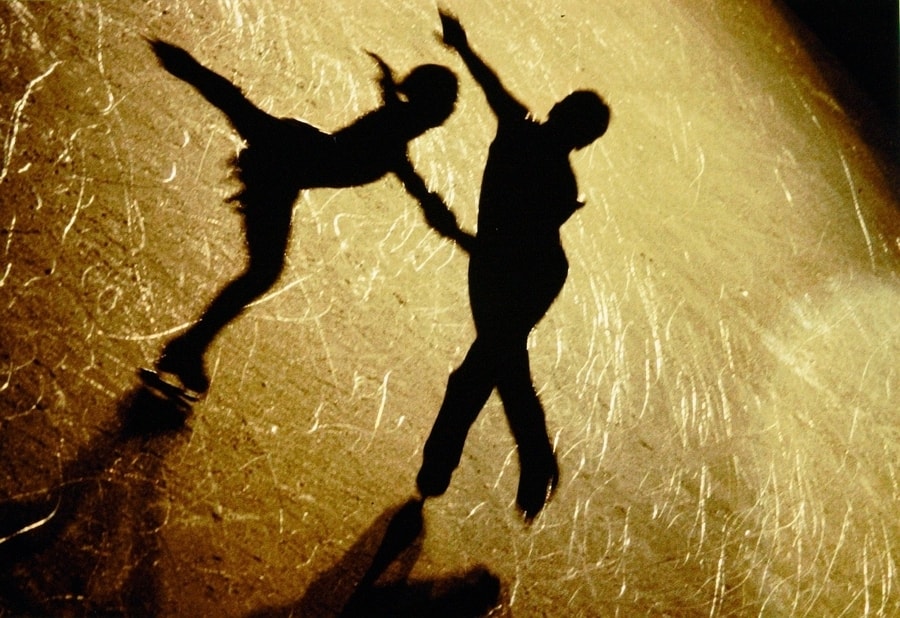If you are reading this article, then you already have an interest in ice dancing, which means you are already a friend of mine. Ice dancing is one of the most beautiful, powerful, and elegant forms of expression and one of the most admired sports in the world. If you have ever watched it on T.V, on during the winter Olympics or have had the privilege to see it live, then you know this. Want to know how to learn? Well here we go, you are about to go on a journey that will change your life for the better, forever.
The crooks of the matter is, that if you want to learn to ice dance, you need to learn to ice skate first. Now before I send you off to practice your art in the mountains for 10 years, relax, you only have to learn to a certain level, then you can begin ice dancing and continue to learn ice skating techniques whilst you learn to ice dance. Getting the basics down, will save you time in the long run. A good coach is essential and ice skating and ice dance clubs can be of great assistance.
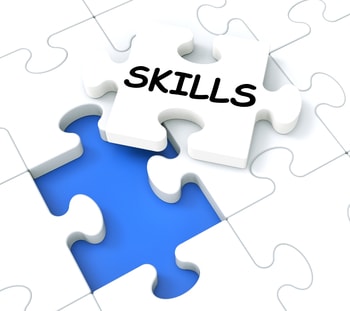
How do I learn the basic skills of skating for ice dance?
Well, time spent here will save you a great deal of time in the long run. If you have never skated before, then get yourself to your nearest rink and get on the ice. Whilst you are there, have a word with the ice rink staff, ask about learn to skate courses and classes. Almost every rink, offers some form of learn to skate course. I am not going to start listing them off, because they vary throughout different countries. Get yourself on a learn to skate program and you are off to a great start.
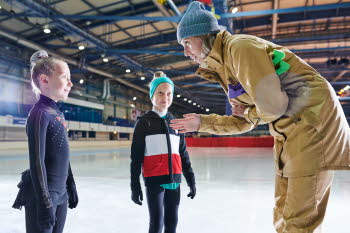
Why are learn to skate programs and group classes so good?
Well, they are good for loads of reasons:
1) You will receive instruction from a qualified coach.
2) Taking group lessons is one of the lowest cost methods of receiving professional coaching.
3) You get used to being coached in the comfort of a group.
4) You all start at the same level and ability
5) Its a great way to socialize and make friends at the rink
6) You get to experience different coaches, this helps you choose a coach later
7) You get taught the principles of ice skating in the correct order
8) The coaches get to know you as a familiar face and a serious student
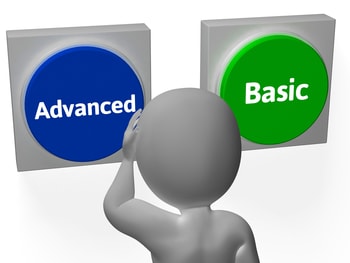
How important are the basics?
Very, yes very important. The basics are what will turn you into a great ice dancer. Don’t be distracted by those seeking to impress by ‘cheap tricks’. A good solid ability when it comes to the basic skating will hold you in good stead for the rest of your ice skating days. Mastering the basics, for me , never really stops, getting those basics in as early as possible is important. In the end, taking the time in the beginning is actually the fastest way to learn to ice dance.
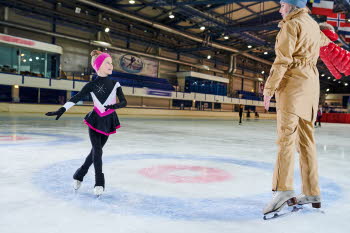
When to get an ice dance coach
If there are no group classes or learn to skate courses at your rink then, you may want to get a coach earlier rather than later. You will learn more in ten minutes with a professional coach than you can work out on your own in a week of hit and miss trying to figure it out.
If however, you are fortunate enough to have a learn to skate program at your rink and you have attended the program, there will be a natural point where the course is finished. If not then there will be a point where skaters will begin to progress to private coaches.
If you are not sure when you should move to your own coach, then have a chat with one, or a few. Get some advice on when is the best time for you to move to a private coach.
How do I choose the right coach for ice dance?
Well firstly, they have to choose you as much as you choose them, this is a two way street. Also you should know that having an ice skating coach is not a right. You shouldn’t just expect to get one because you have finished the group classes. You should approach a coach respectfully and ask if they would be willing to take you on as a student. Remember, that this is as much a commitment for them as for you. Be prepared to answer questions on where you would like to take your skating, whether it is to tests, competitions or just to increase your current skill level.
Hopefully you will have already been coached by the coach you are approaching and so they will already know that you are a serious skater that wants to work hard to progress. If this is not the case then you may have to prove yourself over time.
One of the great things about attending group lessons and clubs is that you get the chance to try out different coaches. You get to experience different teaching styles.
If you have not had the benefit of having had coaching by a particular coach, but are interested, then try booking one lesson, to help with something you are struggling with. This will give you the chance to get a feel for their teaching style.
It is important that you choose a coach that has a teaching style that suits you. Some people do well when they are really pushed, with a verbal soundtrack, military style. Other people do not appreciate being so harshly pushed and appreciate a softer approach.
Different coaches also teach technical aspects differently. Some are great at reducing tasks down to smaller and smaller components until you can understand what they are trying to achieve. Some coaches teach more by the way it should feel and can identify errors by just looking at your position or skating it with you.
Essentially for ice dance, you ideally need a coach that specializes in ice dance. Someone who teaches nothing but ice dance. Ideally someone whose career has formed around their own ice dancing.
This isn’t always possible however, some coaches may teach ice dance as a ‘second’ subject. So, although ice dance teaching doesn’t fill the bulk of their week, they are able to teach ice dance as a second subject to a certain level.
Even a non specialist coach will be able to help with edge work and the different elements. This can still greatly help your ice dancing.
Once you have had a chat with a coach and they are as happy to take you on as you are with their teaching style then you will be looking for a regular weekly slot. Again, these come with time. Expect to have to fit in around the coaches existing schedule for the first few months. This may mean that your coaching times will change weekly. Some weeks you may not be able to get a lesson at all.
After a few months then hopefully there will be a regular slot for you. This will happen, but it may take a while, so be patient in the meantime.
When all is considered, receiving lessons from a coach will make a huge difference to your skating and is essential for competitions and tests. You can learn more with a coach in a few minutes, than you can figure out on your own in weeks
Is it a good idea to join a skating club?
Yes, definitely. Skating clubs enjoy great ice. That is to say, that you tend to get a better quality of ice on private club ice. They normally resurface the ice just before the club goes on. There are not normally as many skaters in the club as there is on public ice, so the condition of the ice stays better for longer.
You can generally get more done on club ice, because there are not so many people on the ice. Those that are on the ice, generally know what a dance pattern looks like, so they can predict where you are going, more than the public can.
Another great thing about Skating club time, is that many of the rules that apply during a public session, do not apply during club time. At my local rink you are only allowed to travel in one direction on a public skate, but on club time, you can travel in any direction. You can also raise your blade above waist level, unlike on a public session. So in many ways club ice is allot like patch ice, in terms of freedom. Although most clubs do have rules and etiquette, they are normally in favor of the skater.
Skating clubs, particularly ice dance clubs, are a great source of information and learning. You are surrounded by skaters and coaches with a similar interest. You will have the opportunity to learn a great deal.
There is also often the opportunity to have lessons on club time, which can be quieter and more enjoyable than if your patch ice time is at a busy time of the week.

At what point am I good enough to join a figure skating or ice dance club?
Probably sooner than you think. It’s a common misconception that you have to be really good to join an ice dance or figure skating club. When I was asked by a friend to go to an ice dance club, I was worried that I would not be good enough and that I would look stupid. This couldn’t have been further from the truth.
Once you have got about six to eight months of practice with the group classes or courses, your normally about ready to join an ice dance club. By this time, you can probably skate progressively forward, do outside 3 turns, mohawks and have some basic backward skating, though it might not be too fast.
Remember that ice dance, like all other areas of skating has levels. so when you start to dance you can start with the first couple of ice dances. These involve forward skating only and there are no turns to worry about.
Ice dance clubs and general figure skating clubs are always looking for members. Remember, that they have to pay for the ice they are using, if they don’t get enough members, the club will struggle. Clubs are generally really welcoming to new members, trying to make them feel as welcome as possible.
Also consider that you may not be the most inexperienced person at the club, even if you are new. If you are the least experienced, remember, that most of the people in the club, joined when they were skating just like you.
Can I learn to ice dance whilst I am still learning to skate?
Yes definitely. If you were to wait until you were a perfect ice skater, then you could be waiting forever. Although I have stressed the importance of good basic skating skills, they don’t have to be perfect before you start learning to ice dance. Once you have gained some reasonable basic skills, you are ready to start learning to ice dance. This is actually a great way to learn.
The great thing about learning to ice dance whilst you are perfecting your skating skills, is that you get to do the thing you love sooner, dancing on ice. This gives you loads of incentive to keep learning, keep practicing and increasing your skills.
With high motivation, you will be skating harder, more often and generally trying more than if you are just learning to skate for the sake of it. learning to ice dance whilst learning to skate will give you the benefit of learning the right way to do things the first time round. Your coach will appreciate this too, that your learning the right way, from the start.
As you progress through the first dances, your skills will be improving all the time. Your edges will be getting better, core stability and speed. As the dances progress, so will your skills. Most of all, you will be enjoying yourself, that makes learning so much easier, there is no substitute for loving what you do, in terms of learning.
Do you have to learn the pattern dances?
Do you ? No, your a free person and you don’t have to do anything you don’t want to. Should you? Yes, probably. The pattern dances are sort of woven into the fabric of ice dance. They provide a good solid point to learn from and at some point you will come across them. Most ice dancers usually start off in ice dance by learning the first few pattern dances.
Some skaters go right through the list, one after the other. They learn the dance, then do the test, then, once the test is passed they move on to the next level.
Some skaters do a pattern dance test then do a moves in the field test (field moves in the UK), then go back to to the next dance test. Maybe they throw in a free dance test between as well. It is really up to you. But know that there is a great deal of technique and learning involved in the pattern dances and that they have much to teach you, so don’t dismiss them.
What do I have to gain by learning the pattern dances?
lots, you have lots to gain. The pattern dances will introduce you to dance moves in a precise way and in the order that it is best to learn them (more or less).
It was when I was learning the novice foxtrot that I had to learn leg swings, the canasta tango, when I learned how to do slip chasse’s, so there is merit in learning these dances, if only from a moves point of view.
There are more than new moves to the pattern dances though. Learning them, you pretty quickly learn that you are skating with someone else. If that someone is your coach, you could well be traveling rather quickly. That speed is exhilarating, it does however show up all of your bad positioning. So the pattern dances are great for helping with positioning, hold and even where you look, you will find, can make a great difference to the way you skate.
There is a good chance however, that you will be skating a dance on your own for a while. Many coaches will get you skate the dance on your own first, before they will dance it with you. This is because you need to know the dance yourself, you need to be able to skate the dance yourself before you can skate it with anyone else. You don’t want to be leaning on your coach to get through the dance.
The dances are in the order of difficulty, so don’t worry. You start off basic, then the difficulty increases as the dances progress. You will often find that what you learn in the first dance will follow on in the second dance. Similarly, the dances will grow, with the next dance, taking what you learned from the previous and building on it. There are leaps in learning when you have to take on something new, but that’s exciting and keeps you interested.
There is more to it than that though. Being able to dance the pattern dances opens up more categories in competitions. It also means, you can dance with a complete stranger as long as you both know the dance.
You will probably recognize the styles of the dances, even if you have a limited knowledge of ice dance. The familiar styles of tango, waltz, rumba, samba and foxtrot etc are all there. So even though the dance itself might be new, you may already know kind of what is might look or feel like.
Pattern dances are lovely when they are skated properly, or when you are trying to get them to test standard at least. If you are just stepping them through with a friend or as part of a weekly routine at a dance club, they will feel totally different to when they are done properly. I personally really noticed the difference when skating a dance with a coach on the run up to a test, compared with just stepping them through at an ice dance dance club. When you are training for a dance test, there is a great deal more to the dance than you could have imagined. They are almost always more dynamic, exciting and difficult than you thought!
Then there is free dance.
I’m going to make a bold statement here and say that every one that ice dances, secretly wants to do a free dance. O.K maybe not everyone, but most.
What is free dance? Well it’s a section of dance that allows you to choose your own music. The music doesn’t have to be instrumental, so you can have music you more readily recognize. You can even have your favorite song, as long as it has enough of a beat to be danced to. and there are no explicit lyrics.
Free dance is so much fun. You will learn loads too. You will be introduced to steps and holds that you have probably never done in pattern dance. If you have been doing pattern dance for a while, then free dance will feel exciting and well, free.
The skills that you have learned in your compulsory ice dance will not be wasted here. Your skills will be used in edges, moves and holds. Free dance can be a real showpiece and you can take it to competition of course.
Who creates or choreographs the free dance program?
Well in short, your coach. I am not saying that it is impossible for you to create your own free dance, but it would be very rare and you would be seriously in the minority. Almost all free dance programs are created by a coach. I say almost, because there are professional skaters out there that may be able to do it for themselves, but in reality, even at Olympic levels, free dances are created by coaches and/or choreographers.
Your coach will be able to create a program that is appropriate to your skill level. The coach will also know your strong points from coaching you and will be able to incorporate your strongest moves into your program.
Sometimes but not always, your coach may also be able to edit your music to the correct length, using the parts of the song that sound best, sound more interesting for better choreography and best fit the mood of the dance.
If you would like to free dance, then speak to your coach. If you have an ice dance coach, then great, they will almost certainly be able to do it. If you don’t have an ice dance coach, they will still be able to help, but may bring in the expertise of an ice dance coach or a choreographer.
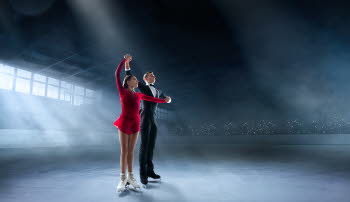
How do I get to ice dance in a competition?
Well, the first point of call will be to speak to your coach. Firstly let them know that you would like to compete. If possible, tell them as early as you can, or a soon as you have decided that competition is something you are interested in. This will give both yourself and the coach something to aim towards and may well affect the way you are taught, in terms of what may be needed for a particular competition.
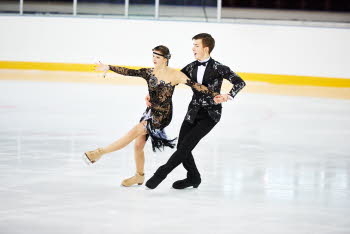
Do you need an ice dance partner to ice dance?
No you don’t. In fact, there is a school of thought that says you are better off dancing on your own whilst you are learning the basics to build up your strengths as a solo skater. There isn’t really a limit to how far you can go on your own either. Not only can you progress up the ranks in moves in the field (field moves in the U.K), but you can progress through the pattern ice dance and free dance levels to great heights on your own.
You can also compete in ice dance on your own, there are plenty, (in fact most) of competitions where there are solo ice dance categories in both pattern and free.
If however in your travels through the ice dance world, you do meet someone you would like to skate with, then of course you can progress as ice dance partners.
So in summary – How to learn to ice dance
How to learn to ice dance
- Get on the ice
This sounds obvious, however, it is important to start by going to the rink and getting a feel for the ice.
- Learn the basic skills of figure skating
This can’t be emphasized enough. Time spent learning basic techniques, will stand you in good stead as an ice skater and later an ice dancer.
Take time to gain skills in edge work, balance, body positioning, turning and stopping. You will need them all for ice dance.
It is actually quicker to spend some time on the basics now, than move on to dancing too quickly and have to go back to learn the fundamentals of ice skating. - Take some group lessons
As stated above, group lessons are excellent value for money, a great way to access professional coaching and you will make friends too! You will also possibly get to try out different coaches before committing to a personal coach.
- Find yourself a coach
A coach is the key to success in any area of figure skating. Ice dancing is no exception. Taking group lessons will have possibly introduced you to some of the coaches at your rink, hopefully this will have given you some idea about which coach to approach for personal coaching. If not, then ask other skaters and staff at the rink. There is usually a head coach at each rink that may be able to help. Be aware, that there is a lot of politics and past between coaches, so make your own decision. Use the advice above in the article when it comes to approaching a coach.
All in all, they are definitely the way forward, so get yourself a coach. - Consider getting your own figure skates
Not mentioned above, but definitely a good idea. You can only go so far in house skates. Getting your own ice skates is a bit of an investment, but you will soon get it back by not having to hire them at the rink. You will get to know your own skates and they will become infinitely more comfortable than anything you can hire. They will mould to your feet and become one with you.
- Consider joining an ice dance club
Clubs have access to facilities that you may not have access to alone. Facilities like good quality private ice, fellow ice dancers and coaches.
- Learn to skate whilst you dance
Yes, you need some good basic skating skills before you start, but you don’t have to be the world’s greatest skater before you start to ice dance. You can start with some basic dance techniques whilst you continue to hone your general skating skills.
- Learn some pattern dances
These are the traditional dances that you may have heard of like the novice foxtrot, the rhythm blues, canasta tango etc. You don’t have to do every one, but learning the basic pattern dances will teach you skills that are transferable throughout ice dance.
- Try a free dance
Go on set yourself free, you will be able to have input into what music you dance to and learn some wonderful new techniques, learning as the choreography is created is a liberating and very exciting experience, it will push you out of your comfort zone, maybe you could even think about a competition.
- Give a figure skating – ice dance competition a go
Why not, it’s your first one, you have nothing to prove, just stepping onto the ice is a win when it comes to your first competition. You can enter many competitions at novice level. So consider giving an ice dance competition a go.
- Consider an ice dance partner
You don’t have to have one. You can dance for years without one, including taking test and competitions. There is something magical about having an ice dance partner though and it opens up a whole new world of opportunity, so consider it.
- And finally………… Relax
Enjoy the process, it takes a lifetime to master, it’s the process that is amazing. The training, the shows, competitions and all the people you meet along the way. Enjoy every minute, ice dance will keep you fit and soothe your soul (it will also be extremely frustrating at times) so enjoy. You will be dancing on ice before you know it. I salute you.

